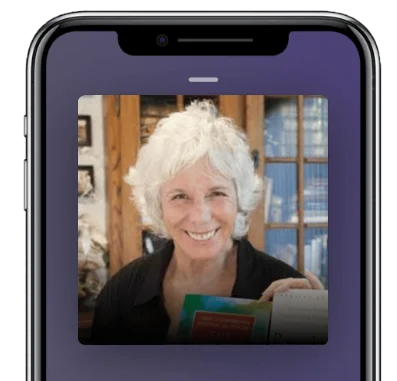In this Episode
- [02:17]Helen explains why she likes talking about Irlen Syndrome.
- [03:23]Irlen Syndrome is a kind of visual processing problem. In other words, the problem isn’t with the eyes themselves.
- [04:25]Up to 48% of certain populations have Irlen Syndrome. In the general population, around 26% of people have it.
- [05:11]What are some of the symptoms of Irlen Syndrome that show up in everyday life?
- [10:42]Helen talks about her Spectral Filters, which can help with Irlen Syndrome. She also explains that the condition can be inherited or acquired.
- [13:38]We hear about the environmental triggers for Irlen Syndrome.
- [17:58]Helen talks about the steps involved in getting tested for and diagnosed with Irlen Syndrome.
- [20:24]Stephan shares his personal experience with being tested for Irlen Syndrome.
- [21:48]What would Helen say to someone who thinks they don’t have a problem, but that they just aren’t into reading books?
- [25:38]Helen describes different reading styles. Of the four she talks about, three may indicate Irlen Syndrome. She then tells a story about someone who succeeded in passing the bar after being treated for Irlen Syndrome.
- [28:30]Stephan and Helen talk about Dave Asprey, who also has Irlen Syndrome. Helen then goes on to talk about how dramatically Irlen Syndrome can affect overall health and quality of life.
- [33:18]We hear more about different ways in which Irlen Syndrome can affect people, including in relation to driving and sports.
- [36:47]Helen emphasizes how important it is for her to make sure that she isn’t misdiagnosing Irlen Syndrome.
- [39:25]To be tested, does someone need to fly to Southern California to meet with Helen? She clarifies that they have testing centers in 146 countries worldwide.
- [40:07]The screening process can take an hour to an hour and a half. The diagnostic process for the right filter takes two to two and a half-hour. Helen then talks more about the logistics of the screening and diagnostic.
- [41:10]Helen talks about the average cost of the screening and diagnostic.
- [44:24]The cost for the tinting is approximately $156 (on top of the price of your own glasses).
- [45:11]Stephan and Helen talk about how life-changing the process of being treated for Irlen Syndrome can be.
- [46:24]We hear more about light-triggered headaches, and the likelihood that they’re caused by Irlen Syndrome.
- [47:25]Helen talks about Irlen Syndrome in relation to autism. She describes her Asperger’s College Professor Talks video.
- [52:24]Helen handles children with autism differently, especially those who are non-verbal. Here, she describes how she finds the best solution for these children.
- [53:57]We learn why, and how, Helen came up with the process of treating and identifying Irlen Syndrome.
- [60:22]Helen talks about her new book, Sports Concussions and Getting Back in the Game of Life, and how much of it deals with each of several various topics.
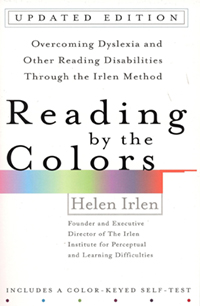
It’s great to have you on the show, Helen.
Thank you, Stephan. I’m really going to enjoy our time together.
Me too. I’m so honored that you joined us today. Listeners, I want you to know that I got to experience Helen and her amazing technology, the Irlen Method, firsthand, at the Bulletproof Conference just a few months ago. I discovered that I actually have Irlen Syndrome and a lot of you folks listening have it and you don’t even know it. Let’s learn about what is Irlen Syndrome? Helen, could you describe it for us?
I was just going to say before we start with the description because it’s very broad-based that one of the reasons I love talking about it is to create awareness because most people baseline their experiences and how they feel and think everybody experiences the same thing and feels the same way. They don’t know that things could be any different or any better and that it could help their performance and even their health and wellbeing. Talking about it is to create awareness.
That makes a lot of sense because it’s an expression that goes, I don’t know who discovered water but I know it wasn’t the fish. You don’t know that you have the syndrome when you don’t know what life could be any different. You just think, “Oh, I have night blindness. It’s hard to drive at night or it’s not that pleasant to read books. It’s too much stimulus for me. I prefer listening to audiobooks instead,” but there’s actually a reason why that’s happening. Let’s talk about Irlen Syndrome.
Irlen Syndrome is a type of visual processing problem. The first thing people have to realize is the fact that you don’t see and interpret information with your eyes. Everyone thinks that the visual system starts and stops with their eyes but you have a brain that has a large visual cortex which has the largest real estate in the brain. It’s your brain and visual cortex that has to read and process information. We’re going to be talking about how the brain can be misperceiving that information and creating similar things to optical illusions and physical symptoms that are triggered and how these lead to a variety of difficulties for a whole variety of populations.

I think you told me before that the statistic is like one out of every two people have this syndrome?
It really varies, we find that a lot of people are being misdiagnosed such as with those ADD, ADHD, and dyslexia. It’s just about 48% among that population. Even people who are high achievers, who are gifted can be working harder than they need to be. It’s probably in the general population, around 26%.
That’s a lot of people who have this syndrome. There is a process to diagnose that you have it. Let’s talk a bit about what are some of the symptoms that show up in daily life? Maybe somebody who is listening say, “Wow, that sounds like some of the stuff I experience.”
Let’s start with reading because the majority of our population comes to us because they struggle with reading. With reading, it’s interesting, I was kind of thinking about the norm again where we think, “Oh, what I experience is normal.” A lot of times when I speak to large audiences I’ll say, “How many of you think that reading was created to put you to sleep?” A lot of hands go up but not everybody. They look around and then I say, “How many of you can read for long periods and never get tired or sleeping?” I have two populations that never talk to each other and they don’t know that the other one exists. Same thing with headaches or migraines, how many of you think that everybody if they read long enough would get a headache because you get a headache when you read? You get some hands go up and they look around. A lot of people don’t have their hand up. How many of you don’t get headaches and realize that there are people who can get headaches?
This is part of why am I going to go through some of the symptoms and some of the problems that you can experience. What we hear most often from people who have Irlen and read is that reading gets harder the longer that they read. That they’ll start to skip words, skip lines, or lose their place. One of the big issues is the fact that they find themselves having to re-read for comprehension, that the reading gets slower and choppier the longer they read. They start to feel fidgety. They get distracted. They even feel anxious and frustrated. They may get tired or sleepy. Their eyes bother them. They get strained and a whole array of tiredness and sleepiness, headaches, nausea and dizziness. They may even be symptoms such as brain fog, lightheadedness, irritability, nervous, and even anxious or anxiety. Those are just some of the symptoms that people can be experiencing and think it’s normal. I think what happens is these people look around and go, “How come they’re not looking up? How come they’re not taking a break?”
You started in school and if it hurts too much you want to stop and you look up, and then you’re told, “Don’t do that. Pay attention. Work harder. Focus more.” You learn to do what everybody else does and that’s you move your head side to side and then turn the page whenever one else turns the page so that you don’t stand out and you’re not told that you’re bad, that you’re not trying hard enough, all those labels that kind of integrated into your life and stay with you for a lifetime. It can vary. In the occurrence when you discover that reading gets harder, it may start out early or you may be a very good student and do very well when you first start to read but when there’s this change when you start to read, not to learn to read but reading for comprehension and the amount of reading you have to do for comprehension increases whether it’s in middle school, or high school, or even college. That’s when the problem can start.
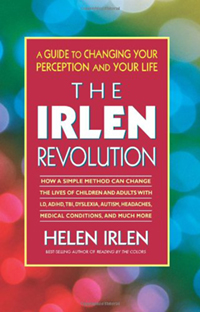
The onset can really depend and vary from individual to individual. What’s sad for me is a lot of times girls get underdiagnosed to this because they have better compensatory strategies. They learn how to do things without reading. They are very good at listening. They’re good at raising their hand, asking questions so they do well in school and they’re getting A’s and then they go to college and they are used to getting A’s. After one month in college, there’s about six months behind and they have to drop out of college. They are now put on medication for anxiety and depression and that’s when I see them after all of this occur and that’s sad, but we can change things easily. We can get the Irlen spectral filters, they’re able to read, and they’re able to go back to school and succeed and do well.
Somebody who doesn’t really enjoy reading, I met somebody yesterday who hasn’t read a book in many, many, many years and just isn’t into it. It could very well be that she has Irlen Syndrome.
There’s always a reason that you don’t like to read. People who don’t like to read blame themselves and they don’t realize it’s been an undiagnosed reason. Many of them do have Irlen Syndrome.
Right, there’s a process to get diagnosed. One other thing that I wanted to mention too, I saw some SPECT scans when we met at the Bulletproof Conference that you showed how overactive people’s brains were who had Irlen Syndrome and that is something you can quiet significantly just by wearing the glasses. The Spectral Filters would quiet all that overactivity in your brain.
Yeah, it quiets the activity in the brain. It calms the brain down. People say, “Oh! I feel so much calmer, so much more relaxed. I can focus now. I’m not working as hard at reading or on the computer and it’s so much easier.” I guess what I like to mention is that Irlen Syndrome can be inherited, which is always fun for the children because I can say to them, “You know what, this is not your fault. You get to blame either your mommy, your mom side of the family, or your daddy, your dad’s side of the family.” I have this big smile from the child because this is the first time that they’re not to blame and we can eliminate it. You can inherit the problem or you can acquire it from certain medical conditions, especially autoimmune conditions that make you more light-sensitive or you can inherit from concussions, head injuries, whiplash that changes your brain’s ability to process information.
We’re seeing not just people who have reading difficulties, this affects a lot of high percent of the population who have been diagnosed with autism, who live in a very distorted environment so their environment is actually moving, changing, coming at them, assaulting them and they have to protect themselves from that environment and they’re not seeing things the way they should be. We see people on a continuum, as I mentioned a lot about a third or higher of being misdiagnosed with dyslexia or misdiagnosed with ADD or ADHD. One of the big things we are seeing now is this kind goes along with life sensitivity and a lot of people who have headaches or migraines have been struggling with them. They go and look to their medical doctor who says you have no problem. They’re looked at by the visions specialist who says I can’t tell you have a problem but usually light sensitivity but they don’t connect it to headaches or migraines or headaches and migraines. Light sensitivity is a key issue.
Many of these people have been searching online because they know that when they’re in sunlight, it’s painful or uncomfortable, they like to wear sunglasses, some people even say, “I don’t just wear my sunglasses outside, I even wear them inside, in the house. I know it sounds strange but I do.” We can eliminate the difficulties with light sensitivity and eliminate the headaches and migraines that go along with that. I like to talk about the environmental trigger so people are aware. We’ve changed our lifestyle over gradually and increasing so that we are now much more on electronic devices and these electronic devices are really bright and they’re creating stress and strain, lighting can create stress and strain but the worst lighting is fluorescent lighting, even headlights at night can be a problem, reading and doing any of the visually intensive activity, and then you look at schools, black and white, high contrast and crowded print meaning the more print on the page, the more you’re going to struggle and the quicker these symptoms are going to appear.
Everyone’s brain is different. One size doesn’t fit all. Share on XThink about the classroom environment where you’re layering each one of these triggers on top of each other and then we wonder why some kids struggle in the classroom. I always think she, my population says, “Why do we have this?” I have to explain to them because the majority of the population doesn’t have Irlen. They’re not bothered by fluorescent lighting, they’re not bothered by whiteboards, they’re not bothered by reading off of computer screens or white paper. When I say bothered by, it can cause physical symptoms and they can’t perform or they have to build in a lot of breaks. I always say it’s interesting. We used to start out years and years ago because I go back that far, we used to read, we had blackboards with white chalk and that reverse contrast is a lot better for my population than what we have now black and white and it’s interesting. Everything that we have done is not a problem for the majority of the population but it has made things so much more uncomfortable and so much more stressful for those who have Irlen. They have to survive in a world that is totally not stressful for the rest of the population.
What we’re doing is leveling the playing field. We’re saying, “No, you don’t have to live in their world and work so much harder and pay a physical prize. We can get rid of it, eliminate all that by just creating a color for you to wear.” That’s what is critical. Everyone’s brain is different. One size doesn’t fit all. What we do is we figure out which of those colors or wavelengths that timing is off and. By the time it reaches the brain at the visual cortex, the brain is like static for the brain. It can process it so the brain becomes hyperactive and overactive trying to work so hard to do it but it triggers what we call distortions but they’re very similar to optical illusions, the physical symptoms, and then the difficulties. We only eliminate those specific colors or frequencies or wavelengths of light that are a problem for that individual very carefully. For each one that we’re going to filter, we also have to determine how much we need to filter. It is very customized for each individual’s brain and that’s why we can eliminate all of the issues, not just some of them, and most of the time totally eliminate the issues that they’re dealing with.
The first step in this process is to diagnose and identify which wavelengths of light are the ones creating overactivity. Does this require a SPECT scan? I should mention too that Dr. Daniel Amen who wrote Change Your Brain, Change Your Life is big into using SPECT scans to identify problems in the brain. He’s been a guest on my show and it was a really fascinating episode. Listeners, do check out that episode if you haven’t already but is SPECT scanning part of the diagnosis process? Walk us through how this all works. We show up at one of the diagnosis facility and then what?
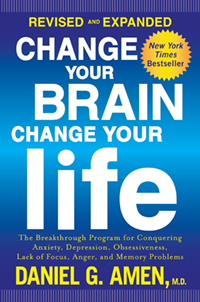
Let me start with step one and step one is to let people know that we have self-test online on irlen.com. They can go and take a self-test and check off the boxes and see if they have enough of the symptoms to want to even call a clinic to go through a screening. That is the next step. We say, we’d like someone to be aware of what are symptoms are, we create that awareness to the self-test then they come in and we do what’s called a screening. There are basically two appointments and two steps to the process. Again, we’re not going to put anyone in Irlen spectral filters unless it’s going to make a moderate to significant difference. That’s what we find out in terms of the first appointment, that is the screening appointment. We also identify at this appointment every one of your difficulties and what you’re seeing that you shouldn’t be seeing, that’s causing these problems on the print of page, on computer screens, anything that you’re trying to read. We have that list of all of your problems and all of your symptoms. And then we use colored overlays which are just plastic sheets and we can come up with a color or combination of these to see if we can stop and eliminate all of your problems and difficulties.
You have something that you have in hand that you can try and you can see if this really makes a difference and then because you can’t be protected from lighting and you have to change the color of your paper, the color of your computer screen and then maybe affecting depth perception even in you’re driving and this just whole array of other areas. We move on to the Irlen spectral filters and so that’s how the sequence goes, self-test, screening, and then testing. Our testing is basically diagnostic testing. We don’t use SPECT scans. We do it by creating awareness for the client of their symptoms, bringing them slowly up to the symptoms, getting rid of them, increasing it, getting rid of it until we’ve eliminated all of their symptoms. It’s a very clinical approach to coming up with what color filters they should be wearing.
Got it. When I did the self-test, I filled out the questionnaire while I was waiting to get the mini-assessment at the conference. I didn’t see to have the syndrome based on how I answered the questions. Why do you think you might want to get tested? It doesn’t look like from your self-evaluation that you’ve got this but what turned out to be was that when I’m reading on white paper in black lettering just like normal books, I get tired of reading them after a while. I can’t sustain it for very long. I love books but I never finished them. I can’t remember the last book that I’ve actually finished. When I get a big take away from the book, I move on. I don’t finish the book and that just kind of blows my mind. As I’m saying this, it sounds ridiculous but it must be because of Irlen Syndrome. We went through the process with the color transparencies and the text on the page wasn’t nearly as loud depending on which transparency you used. It’s a pretty simple process. I was really surprised. I had no idea that such a thing as Irlen Syndrome even existed, let alone that it was affecting my life. What would you say to somebody who’s thinking, “I’m not sure I have a problem here. I think life is pretty good for me. I’m not really that into books or I’m just not into that much.”
Yeah, that’s good excuses. Look and see if it’s affecting your life whether you really do want to read or you’ve just convinced yourself, “It’s not that important. I just build in breaks and I get tired or sleepy but I’m sure everyone does. I can just get my information other ways.” You need to think about it and say, “What would it be like if I can just sit down and read forever?” I’m sure people are aware of the fact that there are people who can sit down and read forever, that’s me. I can sit down with a textbook and start at it [9:00]AM and literally not stop until [9:00]PM. I can get through the whole thing and comprehend it because there’s no effort going into it. I’m the person who doesn’t have Irlen Syndrome. It’s interesting because people assume the reason I discovered it is because I had Irlen Syndrome and I kind of say the opposite. I think the reason I actually discovered this is because I did not have Irlen Syndrome. When I was questioning my adult population I was working with at the university who are bright, working two to three times harder than they should at the university level.
We were talking about it and I started asking questions. It’s how I phrase my question makes a difference so I learned I don’t ask them to talk to me or tell me what it’s like when they start reading, but when they get to that point where they want to stop reading, at that point, how did their eyes feel? How did they feel? How does their head feel? And at that point, how does the page look? I started to get different reporting. I was hearing a citizen once saying, “I don’t know. Reading is just boring.” I was hearing, “Well, the words kind of move a little bit and things kind of flash at me and my eyes get tired and then I’m taking a break.” That’s very different than saying, “Oh, reading is just boring.” That goes back to that statement that there’s always a reason why you can’t read for long periods at a time and enjoy reading and read with comprehension.
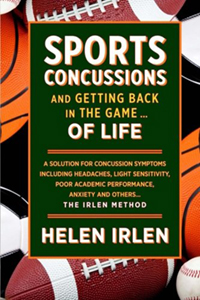
If you have to work at perceiving, meaning that without realizing it, you’re trying to keep the page in focus, you’re trying to keep things from moving, or trying to stop the pain and strain because the white is too bright which typically that’s hard to assess unless I can calm it down. But if you’re working at it and you have to work at it, there’s no way you can work at perceiving and comprehend at the same time. We take the work away so that comprehension flows in, just like you’re ice skating and you just flow across the ice. That’s what comprehension should be like.
For somebody who hasn’t experienced the difference between being symptomatic and having this addressed through the spectral filters, that’s like night and day, right? You can go from somebody who seems to exhibit ADD type symptoms to somebody who is very studious and focused and can do so much more research and self-development because you can focus on listening.
Let me say there are different reading styles. There’s not a right style or wrong style so let me go through them. One style is the person who can sit down and read for hours and hours without taking a break. That’s the person who doesn’t have Irlen. The other three which I’ll mention, they all do have Irlen. The person really likes to read but has to build breaks into reading and has to do a lot of re-reading because if you build in a break and you come back, you can’t start where you left off. You have to go back and re-read and then you read some more and then you have to take another break, and your breaks get longer and the reading time get shorter. Another reading style is just to read short versions of things. They do what’s called skip reading. You read beginnings and endings and unless it’s important you don’t read what’s in the middle. Today, a lot of people are using audiobooks instead of reading because [00:28:06] so they can easily take in the information. They’re not working at it, but when they read they have to work at it.
And then there are those who just avoid reading totally. All of those other different styles are Irlen and you want to be able to easily be able to sit down and enjoy reading, enjoy the information. If you’re in school, it’s critical that you do it. We see children as young as six years of age that it’s already affecting their lives significantly. We see individuals in college and law school, I should tell you an interesting story. He was taking the bar exam to be a lawyer and his sister had come to me and she was a C student and she came at the beginning of high school and went on to become an A student with her own spectral filters and she turned to her brother and said, “You really should go and get tested by Helen.” And he goes, “Me? I’m the one who’s smart. I’m the one who’s the lawyer. You are the one who’s getting C’s.” Anyway, he took the bar and failed it the first time. He took the bar and failed it the second time. The third time, his sister and father walked him in and sat him down and as I was asking him the questions to start out, what we’re talking about what reading was like he said, “Well, I get tired after reading a page or two and I start drinking coffee and then I drink coffee non-stop and then I have to hold my eyelids open to read.” He thought that was all normal. Anyway, a nice end to this story, got his own spectral filters and he passed the bar but he accepted that as normal. That’s what you do and that’s how you do it to succeed if you want to succeed.
What a difference. What an amazing life change to have those glasses. I know that for example, Dave Asprey has also been on the show. It’s a great episode. Listeners, definitely check out the Dave Asprey episode on my podcast. He runs the Bulletproof Conference and he wears what look like Bono glasses. It’s because he’s got Irlen syndrome. You really impacted his life by diagnosing and then solving this for him.
It’s interesting because his light sensitivity was triggered by severe exposure to molds. You can have all kinds of reasons that you get triggered and things change in your life. He is very, very light sensitive. He wears what he calls Bono glasses or his rockstar Irlen filters, whatever you want to call them. We did create something to calm his brain down which takes us right to the neurological system and calms the neurological system down. We’ve seen not just people who have reading problems and that is the main group that seems to come in but we’ve had individuals who have been diagnosed as having agoraphobia. These are kids that lived in a dark room, in their room. If they went out of their room, and I mean their walls were painted black, they had curtains over it, they would be diagnosed as having agoraphobia. They didn’t want to go to school. School was too painful for them. When we were able to see them, we were able to eliminate all the physical symptoms that got triggered by lighting. It was headaches, migraines, nausea, and dizziness. It was fun.
They could go out there and be normal now. Go to school, do social life, do social activities. We’ve seen prisoners come, they’re not prisoners anymore, they’re out of prison, and talking about his story. School was so averse although he didn’t understand what he was doing or why or didn’t realize what’s so aversive. He started running away from school in kindergarten. He quit and dropped out of school as soon as he could. Very bright and got very good at dealing drugs until he got caught and then they sent him to prison, then he get out, then he reoffended then went back. Whenever he went back into prison the first question he asked is, “Tell me what the lighting is like in the prison,” because if you look at prisons, they’re under florescent lighting or sunlight without any protection 24/7. There are bars that are glary and shine off on him. He would do anything he could to get into solitary confinement where he could then escape and be under his bunk. That’s when he thought himself to read, he was in solitary confinement underneath his bunk.
I’ll be happy to report this since he has his Irlen filters, he has not reoffended. He’s gotten married and he has a child. We still follow him and he still comes in because he can’t live without his Irlen spectral filters. Some of the less recognized symptoms that we see is without realizing that in lighting, they feel angry, or fidgety, or panicky, or brain fog, or disoriented, or light-headed, exhausted, fight or flight, and can’t concentrate. It’s more than just eye pain, or strain, or headaches, or dizziness, or tired, or sleepy. It can be very significant and all of those are significant and they’re affecting you. The other thing that you don’t realize is that when your brain is hot like that and you’re putting your brain and yourself under chronic stress unless you’re in a dark room with your eyes closed, you’re in stress. Fluorescent lighting, bright lights, and sunlight even increases sudden visually in terms of activities. When you’re under that kind of stress, you’re affecting your immune system. If you keep doing it at some point, and you’re severe, you may crash or it can create adrenal fatigue as well. It’s kind of serious in terms of your health and well being, for some people. It’s not just saying now I can read more which is important.
We have a lot of people coming for headaches and migraines. What’s funny is the fact that for some people, it affects depth perception.
If you think you potentially have this syndrome, you should get tested because it’s going to affect a lot more than just how much you read and how well you read but it could be affecting the quality of your life and your health.
That was kind of the point that I wanted to make although people kind of don’t understand that or realize it so they focus in on the reading or their physical symptoms. As I say, we have a lot of people coming for headaches and migraines. What’s funny is the fact that for some people, it affects depth perception. When they’re driving and they have to turn left in front of oncoming traffic, they can’t judge the depths, they just stop and they wait and they wait and everyone in the car with him goes, “Would you turn already?” They avoid doing left-hand turns and they go all the way around the block so they don’t have to do a left-hand turn. Or they’re not sure when they change lanes where the car is next to them. They miss steps as a child going up or downstairs or even hesitate to get on an escalator. They may have trouble tracking so that it’s hard to track cars. We see kids who just think, “Oh, well I’m not good at sports. I can’t catch. I can’t throw accurately.” It’s affecting their sports performance and they just have Irlen Syndrome and they don’t realize it. The other thing is that we’re not talking just about reading, we’re talking about print. The same problems that can occur when doing math.
As bright as you are doing math, you may find it slower that plusses start looking like minuses and people keep saying you’re making careless errors. You’re not making careless errors, it’s just how you see or perceive the math. Keeping numbers in columns maybe difficult. Reading music, a lot of people think, “Oh well, it’s okay, I’ll just memorize the music or look at the pattern and learn the pattern with my hands.” I just don’t read music. I had an adult come in and when I asked him what he does with his life he says, “I’m a piano tutor.” And I said, “Have you always been a piano tutor?” And he said, “No.” He said, “No. I’m a very gifted musician but reading the music is very difficult for me and I can’t go out on tour even though I was asked to go out on tour with a very famous group from a long time ago called Peter, Paul, and Mary. I couldn’t do it because I can’t sight read.” When we did the first part and we got him in his correct overlay combinations and he looked at the music, he just stopped. He looked up at me in amazement and looked down again at the page and went, “You mean the notes aren’t supposed to be moving in time to the music?” I think back to how many people aren’t succeeding because of this and they don’t realize it or aren’t achieving what they can and showing their potential because of it. To me, it’s really quite sad.
It’s fascinating. If somebody is more inclined to memorize the pieces instead of sight-reading them like playing piano, that could very well be because of the Irlen Syndrome. Wow.
Usually, it is. Anytime you’re using a compensatory strategy, there’s a reason for it. I’m not saying it’s always Irlen. One of the things we do with the testing is I look at about 12 other areas that can be affecting your ability to perform and attend and make sure that we’re not missing anything else. You can have other issues that are also intruding and affecting your ability to perform. I want to make sure I cover everything that is not covered and asked about typically by psychoeducational testing, even surprisingly medical doctors. We give the individual that comes in a full picture of what they need to do or change. To me it’s so simple to ask people, we are surprised that it’s not covered by the pediatricians which way they feel better. If they feel better if they eat three meals a day or do they feel better if they also snack in between and this is hereditary as well. If they snack in between, how did they feel? What happens? Do they get a headache? Do they get stomach ache? Do they get tired? Do they get sleepy? Do they feel anxious?
There’s a whole array of symptoms that just differs from individual to individual.
Again, there’s a whole array of symptoms that just differs from individual to individual. It’s so easy to realize that these people need to know how soon they need to eat because when they have their first symptom that says they’re hungry, they’re an hour past where they should have eaten, their body doesn’t hold onto protein so they need to push protein, protein, protein at every meal and every snack. That includes children at school who are just not attending. They are getting brain fiber, light-headed, or they don’t feel good because they’re hungry. How easy it is if we could just ask these questions and identify them early enough, we can have more kids succeeding successfully in school and achieving their goals in life. Even as an adult, I find many adults aren’t aware of a lot of the areas that I ask about. I go through about 9 to 12 other areas.
Those 9 or 12 different areas, that’s all part of the diagnosis process when you get tested for Irlen Syndrome?
Yes, it is, right.
How many centers are there around the world? If somebody is listening and they’re in I don’t know, Miami, Florida, is there a nearby testing facility, or do they need to fly to Southern California to meet with you?
Oh no. Some people choose to fly but they don’t need to. We have 146 countries worldwide. I think at this point, we’re almost in every single continent. We have U.S screeners which are that first level where you get tested and diagnosed and you get an overlay. We have thousands of those throughout the U.S and worldwide. We have diagnostics centers practically in almost every state.
What is the cost and how long does this process take? Is it like half-day or 20 minutes?
It is time-consuming. The screening process can take an hour or an hour and a half. The diagnostic process to come up with the right Irlen spectral filter that you wear as glasses or even contact lenses, that takes us two to two and a half hours. You’re giving us a half a day for each one of the appointments.
Is that all in one go or do you have to come back and get the diagnosis after the screening on a different day?
Preferably, we break it because we want each person or the child to use their overlay to make sure when they do a longer reading that they can now do sustain reading and the symptoms that we have now made them aware goes away. Typically, for most people, that’s how we schedule them separate appointments. But if you’re traveling, it can be done with the screening in the morning and the filters in the afternoon.
Cool. What is the cost?
It kind of varies. I can’t give you an exact cost. Average wise, the screening is going to run about $300 and the diagnostic is going to run $300 to $400, $450. It’s not like thousands of dollars that you pay for a SPECT scan. What I hear from the parents who come in and have been vision training and they pay $10,000 to $20,000 for vision training and the child can throw a ball better or catch a ball better but still has all the same reading problems. It’s not like the $10,000 for Lindamood-Bell and it’s not like the thousands that a parent pays out for remediation. In comparison when a parent comes in and they’ve been through everything before they come to us they go, “Oh my goodness, this is so inexpensive. You don’t know how much money we paid out to help the child and none of it has helped.” There’s this sense that I have that this should be made available.
I’ve created a model so that school districts can train somebody on their staff to be able to identify their students who have Irlen.
What I’ve also done is I’ve created a model so that school districts can train somebody on their staff to be able to identify their students who have Irlen and go through the screening process and get them into the right colored overlays so they can at least start reading with their colored overlays. That was my vision, that school districts would implement this and it would become part of what they do for the kids who are struggling. We’ve had districts that implemented it at the first level before the child was given a 504 and IEP plan and found that 50% of the children who are being referred and now were screened first and given a colored overlay no longer were having difficulties and did not a need special services implemented by a 504 or IEP plan. That’s kind of sad for me. I think one of the reasons is the fact that the visual cortex is always on so people have not done as much research to show the importance of the visual cortex and visual processing problems.
That is one of the things that we’re doing. We have 30 years of research but now we’re also working with 2 neuroscientists at Cornell and doing functional MRI to establish the importance of the visual cortex and how it affects other parts of the brain and how it affects and triggers also the autonomic nervous system and how important it is to be able to intercede because the visual cortex does not have plasticity. You can’t just go practice it. If you can’t read with flowing fluency, just keep doing it and it will get better. That’s not how the visual cortex works and that’s because it’s not plastic. It can’t grow and rejuvenate itself so what we do is we intervene so that the information can be processed correctly by the visual cortex.
What is the cost, typically, for the glasses or the contact lenses?
The client can go anywhere and get their own frames and if they’re prescription lenses, they are provided with their own prescription lenses. The lab does, if it’s [00:47:57], it’s just the cost of the [00:47:59] and the tinting which is approximately $156 for the tinting. The contact lenses is the same price for the tinting and we tint just a portion of the contact lens so it doesn’t change the color of your eyes. A lot of professionals prefer to wear contact lenses. They’re not like Dave who thinks they’re cool and calls them his rock star Irlen filters.
He definitely rocks the glasses for sure. I just had another friend go through your process. He’s a client and a friend. It’s been life-changing for him, he’s so excited. It’s amazing what you’re doing.
Yes, Stephan, thank you. The comment that we hear the most often is it’s life-changing and it’s changed my life. Whether we’re hearing from children or adults or the marines who have had blast injuries over in Iraq, in Afghanistan and have been living for years with constant headaches that just vary in intensity and become migraines twice a day to twice a week. We can eliminate all that and then give them back their reading or the other skills so once they’re medically retired, they can actually get a job and support their family or go back to school. Every one of them, they say to me, “This has been a life-changer. It has been a lifesaver for us.” I can’t think of anything I would rather do than what I am doing. Most people say if they can change one person’s life in their whole lifetime, it would be fabulous. I do it every single day.
Yeah, that’s amazing. You’re a gift. I have a relative who has migraines that are triggered by light. Sounds like this person should probably get tested.
If lighting is triggering their migraines or headaches, it’s not just some light or fluorescent light. It’s all lighting.
Not probably, yes. We have separate questionnaires online for light sensitivity and headaches or migraines so that person can go online but I would tell you there’s one on one correlation. If lighting is triggering their migraines or headaches, it’s not just some light or fluorescent light. It’s all lighting, its computer screens, it’s reading, it’s black on white. The brain interprets all of that exactly the same way so they definitely should.
Yeah, I’ll mention it. For somebody who’s autistic, there are so many issues to deal with autism. I know this is one piece in the overall puzzle but can you help us get an overview of the situation for somebody who’s autistic.
Sure, this is a good rehearsal for me. I’m going to Siberia in April. They have an international autism booth and I’m training everyone in the Irlen Method. Quick version, individuals who have autism have complained forever that they have difficulty with sensory modulation whether it’s noise, lighting, food, smell, tactile. They’re dealing with sensory modulation issues in all of those areas, meaning they can’t modulate it. A soft touch feels hurtful for them. What you and I would think is a soft sound, it’s just vibrating in their ears and for those who have Irlen, their environment is not stable, it’s changing, it’s constantly changing, it’s coming at them, it’s dropping down. Half of your face can morph. You can look like a Picasso painting. Whatever it is, it’s horrible. They can’t read and process it. They see it, it disappears, it changes, it’s moving half up the other half down. Can you imagine 100% of the time that’s what your world looks like to you?
We’re able to calm it down and stabilize it and correct it. That’s the area that we work with but we also want to identify any other areas that they have difficulty in terms of sensory modulation. We also want to explain the fact, this is what my adults who have Asperger’s syndrome, now what is called High-functioning autism and they can talk or they can voice activate on their computers. Don’t make us want to look like you. You’re ignoring the underlying issue that’s creating the problem and that’s what I want to say is that we’ve looked at their behaviors and say, “Their behaviors are a way of communicating.” They’re trying to filter out the sensory difficulties that they’re having. They’re trying to calm themselves down by doing rocking and other similar behaviors. They are licking things and touching things because they can’t know what they are because their perception is so off. They take their shoes off because the only way they can accurately tell where they are is their feet. It’s not what they are seeing or the vision processing.
We want people to be aware of that fact. Instead of eliminating those behaviors because we don’t like them, understand them, interpret them, and then figure out what are the issues that are causing these behaviors and can we change it or eliminate it. I have a number now of those adults who have Asperger’s syndrome recommend and they facilitate by typing and then they push a button and voice activates because they can’t do dialogue back and forth because their brain is so scattered from the processing and their input. Once we get them in the Irlen filters, they come in, sit down and we communicate back and forth.
It would be incredible to see that happening.
I do actually have a video on YouTube. We have a couple of stations. One in the Irlen and another one on the Irlen institute and it’s called College Professor with Asperger’s syndrome. She talks about looking at me and explaining how half my face morphs away and her whole life she’s never been able to recognize people. She can’t read emotions. She misinterprets what people are saying. She doesn’t recognize people and here she is in college and teaching college, she can’t remember who’s who and place a name because they always look different to her and how hard it is because she wants to walk up to somebody and say, “Hi.” But she can’t tell who they are and we’ve tested her, we got her in the filters and we have the filters made the same day because one of the labs is here in the institute and we filmed her. She’s actually just holding the glasses up and she’s smiling and talking and say, “Yes, all this is wonderful and I can see it.” You see that the change is immediate and at last. If people are interested, they can get onto YouTube and there are other interesting videos on the Irlen Institute or Irlen YouTube channel.
When you do the screening and diagnosis process, you check a dozen different areas. Do you do that as well with someone with autism and what are those areas or so?
With autism, we handle it very differently, especially for those who have non-verbal behaviors. We send out a questionnaire for the parent so that the parent can identify the other areas. We use the parents. Also, for children who are nonverbal and young, we have what’s called the light activity. We have the parent go through and do different activities under different colored light bulbs. That replaces the overlays. We look to see if any of the colors make things worse or any of the color stops some of the behavior so the child can sustain focus longer when they’re looking at somebody and can do an activity better, just whatever the difficulty that child is experiencing. They send the report to me, I evaluate it and send them a report back and suggest that they go on to get a diagnosis for Irlen spectral filters. We can work with someone using non-verbal behavior figure out what color we need to filter and create their own spectral filters.
That’s amazing. It makes sense that you would do it that way, that you would change a lightbulb and have them do different activities and see how their behavior changes based on the color in the room, that’s genius. How did you come up with this process?
I’ll tell you why I came up with the process which is a little interesting. I worked as a school psychologist for many years and did the all the standard psychoeducational testing. I also had to follow up those students after I did the testing. I just didn’t test, write a report, and that went out to the school and the parent. What I found out is in terms of the testing we’re presently doing, whether it’s neuropsychoeducational or psychoeducational, we’re identifying some children who are struggling. Not all the children who are struggling because the teachers would say, I don’t understand why your testing doesn’t show that this child is having difficulties. I go into the classroom and I sit in the classroom and I watch the fact that this child could not perform. Seeing enough of that made me say, “Wait a minute, what questions aren’t we asking and what are we not identifying?” I couldn’t feel comfortable about the fact that the test identified everything that’s going on for everybody. That’s what led me to discovering this. Discovering the concept of color, we went online and did a med search for anything related to making what courses reading difficulties.
At this point, I had started the program for adults with learning disabilities at the university level and I was heading it. One part of the program I have is a research component to work with these adults because I wanted to know which of these problems stayed with an individual for a lifetime and didn’t go away. When you’re working with adults in the university, you can’t dismiss the problem as being motivational and you couldn’t dismiss it as being maturational. It’s real, it’s lasting for a lifetime. We need to identify it. It was with this group that we were able to identify that they heard Irlen, now we need to figure out how to stop it because I knew from my own experiences that this is not how it’s supposed to be. I wanted to make everybody just like me. We did this med search and we came up with all these things but because the adults, many of them had already been through vision training and tons of mediation. Some of the things with some of the adults but we tried everything. This took about six months and nothing was making a difference at all. One of the students had been through training for a dominant eye where you use red-green glasses, red on one eye, and green on the other eye, and a red overlay.
The red-green blocked out one eye so they’re both eyes open. They’re reading through red glasses and a red overlay. They thought what they were doing is training a dominant eye and this was going to help reading. The first student that we tried this with, this adult just looked at me because she and I had talked and she knew her symptoms and then things moved on the page and she said, “Helen, things are still moving but they’re not moving as much.” That’s the breakthrough that led me to color. We started with overlays and I developed a method for screening. Everyone got into their overlay we thought was the best and these adults student send track the changes for three or four weeks and came back to me, “Oh, we’re comprehending and we can read for long periods and we’re doing so much better in school.” I thought, great! What did they do? They went from that to complaining. They educated me to all the issues that are occurring in their environment but now they want to make better. They want to be able to read off the boards, they want to be able to copy, they want to be able to do scantron answer sheet and they went on and on. I’m a therapist and a counselor as well and a mother, of course, I’ll take care of all your problems. I had to go from overlays and I went to the concept of can we use colored glasses to achieve the same thing.
What I found out was that the color they use as an overlay is not the same color as the color they’re going to wear because the overlay just changes the color contrast on the page whereas with the filters, we are actually filtering out specific wavelengths of light that’s going to the brain to be processed. There’s a difference between processing and allowing the brain to process and just changing color contrast. That’s the sequence of what happened. It was an interesting sequence and because at that time nobody had ever thought of color being helpful and no one had ever identified the symptoms and the issues. Today when children are tested and giving reading tests, they are never asked any of the physical symptoms. They’re never asked about it so we don’t talk about these symptoms. Why would a child say, “I’m getting sleepy. I’m getting a headache,” they don’t know to report because we don’t ask about it. It’s not integrated and considered because the people who created this are like me. They never get any physical symptoms when they read so why would they even think of asking about it.

One last quick question here, the tie end with the concussions, whiplash, some sort of traumatic event triggering the light sensitivity and the Irlen Syndrome. You have a book. This is your newest book, Sports Concussions and Getting Back in the Game of Life. How much of that book is dedicated to just how to recover from concussions and how much of it is dedicated specifically seeing if you have Irlen Syndrome as a result of concussion and then how to solve it?
There’s a good portion of the book that talks about identifying what are the symptoms after you have a concussion that you have to watch out for. The importance of baselining things immediately, what was it like before? You lose that baseline again and then rebaselining it. We talked about that a lot at the beginning and gives a lot of basic facts. That takes about half or a little bit more than half of the book. Most of the time they say, “Time out, relax, take timeout at school, and let most people recover.” A lot of people recover but not everybody does recover and unless you’ve documented the issues, someone says, “Well, I just went into high school and I’m not doing as well in high school or I’m really struggling in high school. I did real well last year in junior high.” “When did you have your concussion?” “Oh, I had it in the summer between junior high and high school.” But they blamed it on just going to high school.
You need to track carefully. We do talk about the Irlen Syndrome and how to identify it. We see people who refer to us from workman’s comp because of accidents. We see people just come in to us. I would tell you that our most severe clients are the military who have had blast injuries creating constant chronic headaches and migraines and inability to function and that I have it reformat all my testing because they’re so severe. Our clients who had head injuries and haven’t recovered from car accidents, things being dropped on their head, falling on concrete, there’s a whole array of issues, and obviously sports. We see NFL players, we see ice hockey players, we see cheerleaders as well, soccer players, and your martial arts sports. I think I love Daniel Amen’s quote that the only safe sport is ping pong.
Dr. Amen is definitely anti-football and the contact sports because of the repercussions in terms of concussions and injuries.
It’s dangerous. When I see them, they really pay the price and it could be a very significant price, not just the areas we’re looking at in terms of the physical symptoms and inability. It’s so much of a struggle to achieve but in other areas of their lives as well.
Hopefully, our listeners are thinking, “I need to either get tested or I have a loved one who needs to get tested or a friend or colleague.” Where should we send folks to do the self-assessment online, to sign up for the testing and screening process and the diagnosis?
Let’s send them to our website irlen.com.
Perfect. Well, thank you Helen so much. Listeners, do check out Irlen Institute website, irlen.com. Thank you for your attention I hope this makes a difference in your life. This is Stephan Spencer signing off. We’ll catch you on the next episode of the Get Yourself Optimized.
Important Links
- Irlen
- Twitter – The Irlen Institute
- Youtube – The Irlen Institute
- Irlen Syndrome
- Irlen Method
- Irlen Spectral Filters
- Irlen Self Tests
- Irlen Testing Centers
- Irlen Spectral Filters

